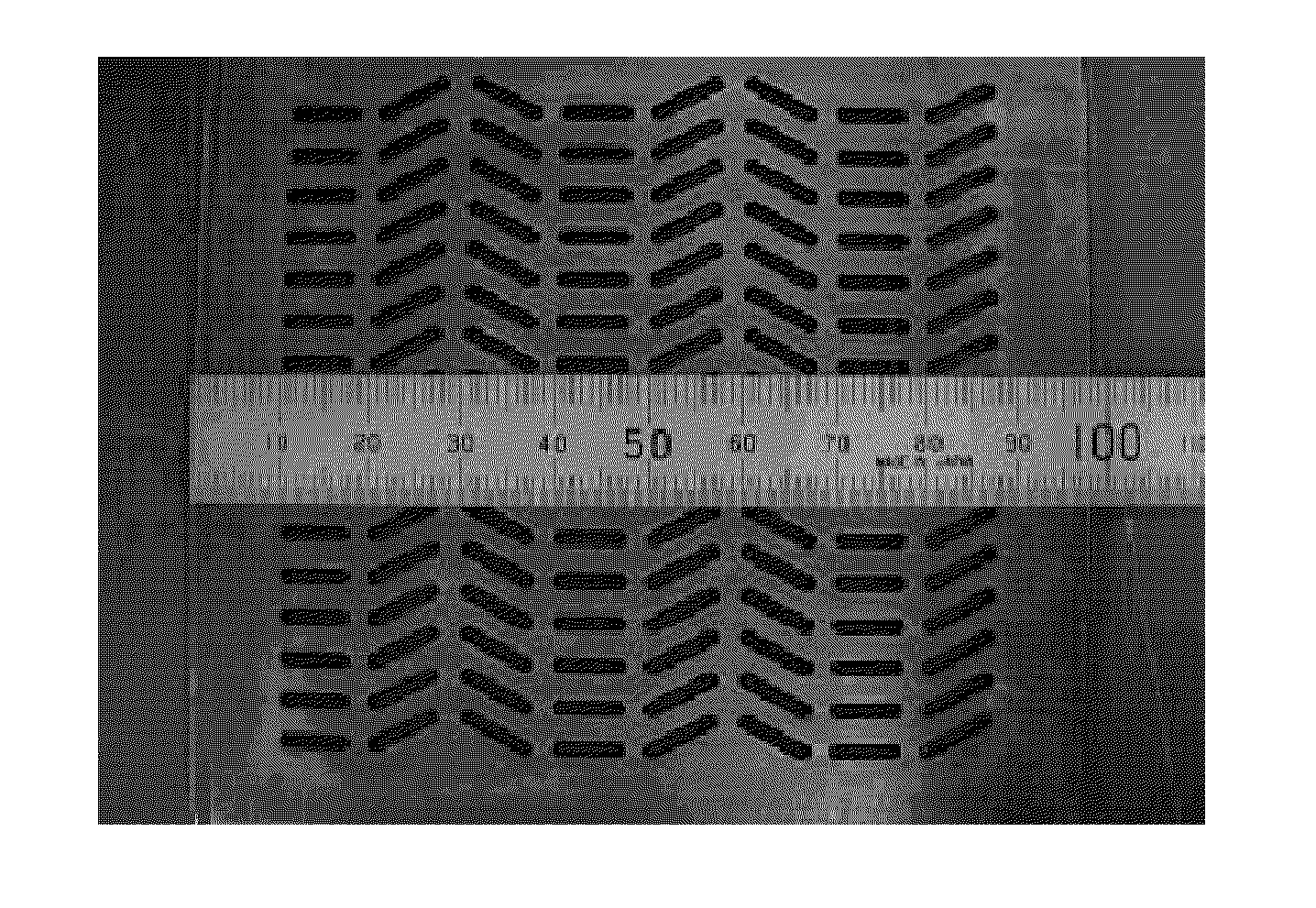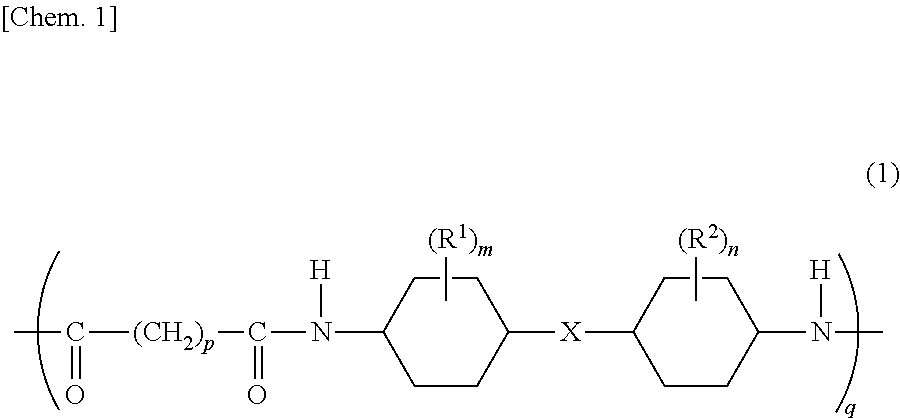Sheet for shoe sole and shoe sole including the same
- Summary
- Abstract
- Description
- Claims
- Application Information
AI Technical Summary
Benefits of technology
Problems solved by technology
Method used
Image
Examples
examples
[0168]The following examples are intended to describe this invention in further detail and should by no means be interpreted as defining the scope of the invention.
[0169]The components used are shown below.
[0170][Sheet]
[0171]Polyamide resin (a): an alicyclic polyamide (manufactured by Daicel-Evonik Ltd., “CX7323”, amino group concentration of 23 mmol / kg, melting point of 247° C., and flexural modulus of 1700 MPa)
[0172]Polyamide resin (b): a polyamide 613 (amino group concentration of 57 mmol / kg, melting point of 207° C., and flexural modulus of 2500 MPa)
[0173]Polyamide resin (c): a polyamide elastomer (a block copolymer containing a polyamide 612 as a hard segment and a polyether as a soft segment; amino group concentration of 19 mmol / kg, melting point of 196° C., and flexural modulus of 340 MPa)
[0174]Polyamide resin (d): a polyamide 1012 (amino group concentration of 35 mmol / kg, melting point of 185° C., and flexural modulus of 1500 MPa)
[0175]Polyamide resin (e): a polyamide 12 (ma...
PUM
| Property | Measurement | Unit |
|---|---|---|
| Temperature | aaaaa | aaaaa |
| Temperature | aaaaa | aaaaa |
| Temperature | aaaaa | aaaaa |
Abstract
Description
Claims
Application Information
 Login to View More
Login to View More - R&D
- Intellectual Property
- Life Sciences
- Materials
- Tech Scout
- Unparalleled Data Quality
- Higher Quality Content
- 60% Fewer Hallucinations
Browse by: Latest US Patents, China's latest patents, Technical Efficacy Thesaurus, Application Domain, Technology Topic, Popular Technical Reports.
© 2025 PatSnap. All rights reserved.Legal|Privacy policy|Modern Slavery Act Transparency Statement|Sitemap|About US| Contact US: help@patsnap.com



